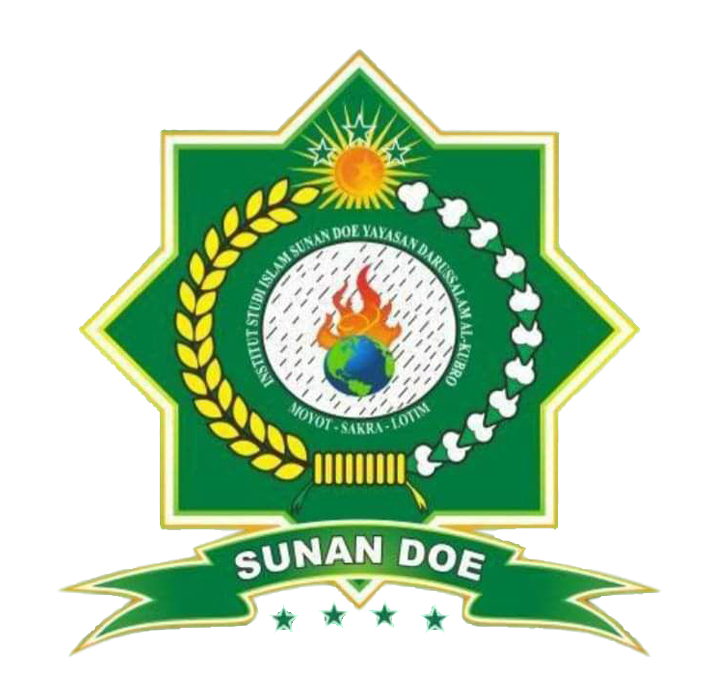Ottoman Turks, Safavids and Mughals: The Stagnation of Islamic Civilization
Keywords:
Ottoman Turkey, the fall of Islamic civilizationAbstract
The purpose of this research is to see how the history of Islamic civilization during the Ottoman Turks, Safavids and Mughals in the 17th-18th centuries. In this research, the researcher uses a literature study by collecting research data from the treasures of literature and making the world of texts the main material for analysis. The results of this study show that Islamic civilization during the Ottoman Turks, Safavids and Mughals in the 17th-18th centuries experienced a significant rapid stagnation starting from the economic, cultural, ruler morality and military fields. This was due to the weak regulatory framework, financial decline, and the emergence of rebellious figures both from within the country and from abroad. So, it is no wonder then that Islam can no longer be the center of attention of world civilization.
References
Aizid, R. (2015). Sejarah Peradaban Islam Terlengkap. Diva Press.
Asari, H., Al-Rasyid, H., Tanjung, M., & Irsyad, M. R. (2023). The Historical Footprint Of India-Muslims In North Sumatra: History and Management of the Al-Mukhlish Tebingtinggi Mosque. Journal of Contemporary Islam and Muslim Societies, 7(2), 269–292.
Badri Yatim, M. A. (2008). Sejarah Peradaban Islam. Jakarta: Rajawali Pers.
Hasbullah, M. (2017). Islam & Transformasi Masyarakat Nusantara. Prenada Media.
Malik, M. K. (2017). Potret Kekhalifahan Islam Dinamika Kepemimpinan Islam Pasca al-Khulafâ al-Râsyidûn hingga Turki Utsmani. TSAQAFAH, 13(1), 135–156.
Masyhuri, S. (2007). Transformasi Tradisi Keilmuan Dalam Islam: Melacak Akar Kemunculan Dan Perkembangan Institusi Pendidikan Islam. HUNAFA: Jurnal Studia Islamika, 4(3), 227–236.
Mughni, S. A. (2002). Dinamika Intelektual Islam Pada Abad Kegelapan. IRCISOD.
Mugiyono, M. (2013). Perkembangan Pemikiran Dan Peradaban Islam Dalam Perspektif Sejarah. Jurnal Ilmu Agama: Mengkaji Doktrin, Pemikiran, Dan Fenomena Agama, 14(1), 1–20.
Nasution, F. (2022). Sejarah Kebangkitan Lembaga Pendidikan Islam Nonformal: Majelis Taklim Di Kota Padangsidimpuan (1901-2020). Universitas Islam Negeri Sumatera Utara Medan.
Nasution, S. (2017). Sejarah Perkembangan Peradaban Islam. Asa Riau (CV. Asa Riau).
Nilamsari, N. (2014). Memahami studi dokumen dalam penelitian kualitatif. Wacana: Jurnal Ilmiah Ilmu Komunikasi, 13(2), 177–181.
Prayitno, H., & Qodat, A. (2019). Konsep pemikiran fazlur rahman tentang modernisasi pendidikan islam dan relevansinya terhadap pendidikan islam di indonesia. Al-Fikri: Jurnal Studi Dan Penelitian Pendidikan Islam, 2(2), 30–43.
Prayogi, A., Arisandi, D., & Kurniawan, P. C. (2023). Peradaban dan Pemikiran Islam di Masa Tiga Kerajaan Besar Islam: Suatu Telaah Historis. Al Irsyad: Jurnal Studi Islam, 2(1), 1–12.
Rahman, M. T. (2021). Sosiologi Islam. Prodi S2 Studi Agama-Agama UIN Sunan Gunung Djati Bandung.
Rizal, M. C., Saputri, F. I., & Imanda, S. A. R. (2023). Sejarah Pemerintahan Islam: Suatu Tinjauan Singkat. Verfassung: Jurnal Hukum Tata Negara, 2(1), 41–62.
Safitri, E. (2018). Kepemimpinan Sulaiman Al-Qanuni pada Masa Dinasti Turki Utsmani (1520-1566). Skripsi, Jurusan Sejarah Peradaban Islam, Fakultas Adab Dan Humaniora, Makassar: UIN Alaudddin.
Sidiqi, F. M. (2019). Ruang Muhasadar: Dari Sadar Menjadi Syukur dan Sabar. Fawaz Sidiqi.
Thohir, A. (2009). Perkembangan Peradaban di Kawasan Dunia Islam (Vol. 1, Issue 1). RajaGrafindo Persada.
Zulfikar, A. (2018). Kepemimpinan dan Kontribusi Sulaiman Alqanuni di Turki Utsmani (Suatu Tinjauan Sejarah). Rihlah: Jurnal Sejarah Dan Kebudayaan, 6(1), 87–106.
Downloads
Published
Issue
Section
License
Copyright (c) 2023 Rodhiyah, Dahlan (Author)

This work is licensed under a Creative Commons Attribution-ShareAlike 4.0 International License.
Cigarskruie: Journal of Educational and Islamic Research by Saniya Institute is licensed under Creative Commons Attribution ShareAlike 4.0
It means that:
- Adapted Material means material subject to Copyright and Similar Rights that is derived from or based upon the Licensed Material and in which the Licensed Material is translated, altered, arranged, transformed, or otherwise modified in a manner requiring permission under the Copyright and Similar Rights held by the Licensor. For purposes of this Public License, where the Licensed Material is a musical work, performance, or sound recording, Adapted Material is always produced where the Licensed Material is synched in timed relation with a moving image.
- Adapter's License means the license You apply to Your Copyright and Similar Rights in Your contributions to Adapted Material in accordance with the terms and conditions of this Public License.
- BY-SA Compatible License means a license listed at creativecommons.org/compatiblelicenses , approved by Creative Commons as essentially the equivalent of this Public License.
- Copyright and Similar Rights means copyright and/or similar rights closely related to copyright including, without limitation, performance, broadcast, sound recording, and Sui Generis Database Rights, without regard to how the rights are labeled or categorized. For purposes of this Public License, the rights specified in Section 2(b)(1)-(2) are not Copyright and Similar Rights.
- Effective Technological Measures means those measures that, in the absence of proper authority, may not be circumvented under laws fulfilling obligations under Article 11 of the WIPO Copyright Treaty adopted on December 20, 1996, and/or similar international agreements.
- Exceptions and Limitations means fair use, fair dealing, and/or any other exception or limitation to Copyright and Similar Rights that applies to Your use of the Licensed Material.
- License Elements means the license attributes listed in the name of a Creative Commons Public License. The License Elements of this Public License are Attribution and ShareAlike.
- Licensed Material means the artistic or literary work, database, or other material to which the Licensor applied this Public License.
- Licensed Rights means the rights granted to You subject to the terms and conditions of this Public License, which are limited to all Copyright and Similar Rights that apply to Your use of the Licensed Material and that the Licensor has authority to license.
- Licensor means the individual(s) or entity(ies) granting rights under this Public License.
- Sui Generis Database Rights means rights other than copyright resulting from Directive 96/9/EC of the European Parliament and of the Council of 11 March 1996 on the legal protection of databases, as amended and/or succeeded, as well as other essentially equivalent rights anywhere in the world.
- You means the individual or entity exercising the Licensed Rights under this Public License. Your has a corresponding meaning.















